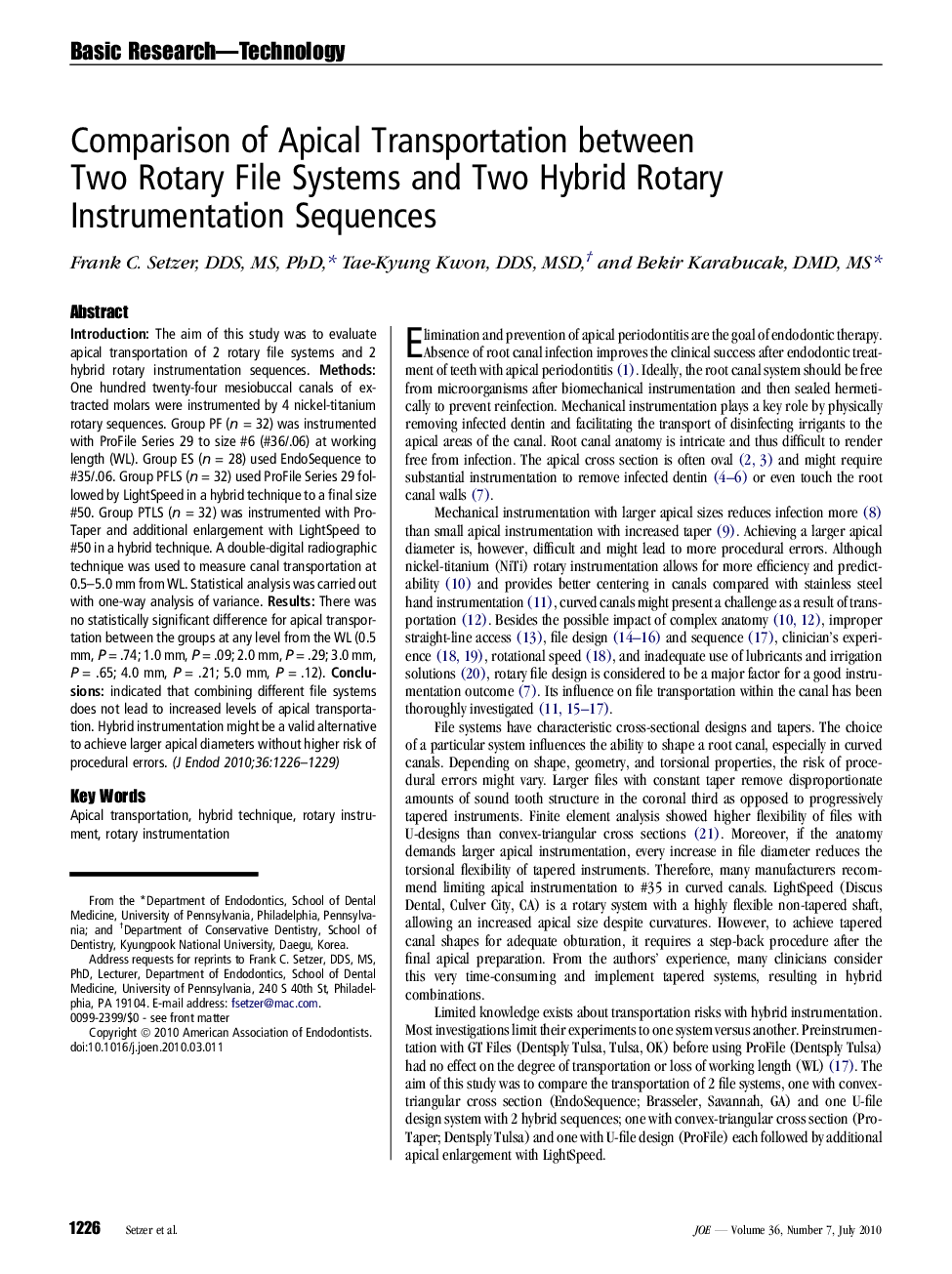| Article ID | Journal | Published Year | Pages | File Type |
|---|---|---|---|---|
| 3147271 | Journal of Endodontics | 2010 | 4 Pages |
IntroductionThe aim of this study was to evaluate apical transportation of 2 rotary file systems and 2 hybrid rotary instrumentation sequences.MethodsOne hundred twenty-four mesiobuccal canals of extracted molars were instrumented by 4 nickel-titanium rotary sequences. Group PF (n = 32) was instrumented with ProFile Series 29 to size #6 (#36/.06) at working length (WL). Group ES (n = 28) used EndoSequence to #35/.06. Group PFLS (n = 32) used ProFile Series 29 followed by LightSpeed in a hybrid technique to a final size #50. Group PTLS (n = 32) was instrumented with ProTaper and additional enlargement with LightSpeed to #50 in a hybrid technique. A double-digital radiographic technique was used to measure canal transportation at 0.5–5.0 mm from WL. Statistical analysis was carried out with one-way analysis of variance.ResultsThere was no statistically significant difference for apical transportation between the groups at any level from the WL (0.5 mm, P = .74; 1.0 mm, P = .09; 2.0 mm, P = .29; 3.0 mm, P = .65; 4.0 mm, P = .21; 5.0 mm, P = .12).Conclusionsindicated that combining different file systems does not lead to increased levels of apical transportation. Hybrid instrumentation might be a valid alternative to achieve larger apical diameters without higher risk of procedural errors.
